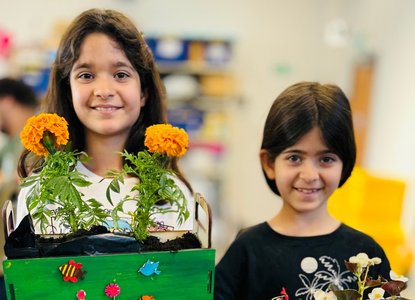Yorkshire Wildlife Trust was given a Funding Plus award of £7,000 to support their internal Diversity, Equity and Inclusion (DEI) work. Whilst they had started their DEI journey and identified actions to take, they did not have dedicated resource to take these forward. The funding enabled them to work with Lee Corner, a local DEI consultant, on a bespoke approach that would work for an organisation of their size and reach.
Yorkshire Wildlife Trust is a charity focused on driving nature’s recovery, so wildlife and people can thrive together across Yorkshire’s communities, land, rivers and sea. Working with communities it protects and restores wild places to enable wildlife to flourish, by managing nature reserves and influencing landscape scale restoration.
About the work supported
- The Funding Plus award enabled Yorkshire Wildlife Trust to develop a bespoke methodology for understanding and acting on DEI in their context. Their ‘Bridges, Barriers and Bonds’ approach was developed through four half-day workshops with a core group of staff. In addition, Lee held developmental conversations with senior leadership and trustees, and presented at an all-staff conference in 2023.
- They found that the storytelling approach helped staff to understand what DEI looks like in real life: for example, a visitor to a nature reserve who could not afford clothing or equipment that would enable them to blend in, and how different their experience was when staff responded to them with care and curiosity rather than dismissively.
- Sharing personal stories supported staff to connect their own experiences of inclusion and exclusion to the experiences of under-represented staff or communities. This had a profound effect on the thinking of those staff that were involved in the workshop, and a ripple effect into their work.
Reflections from Rachael Bice, CEO, Yorkshire Wildlife Trust
What did the DEI support help you to do?
We started to talk about the idea of barriers and bridges: how do people in different circumstances identify barriers and thus, how can bridges be opened up. People shared their stories about not belonging, and then we started talking about ‘what can you do to help open bridges so people feel they can belong if they want to?’ The idea of ‘bonds’ emerged. Established bonded groups can help people access spaces they might otherwise find inaccessible, but also the importance of making sure bonded groups don’t create barriers for others. This is where the three B’s came from: barriers, bridges and bonds. It was so helpful to have that language to be able to identify the dynamics which are always in action and this work needs to account for.
What difference did it make to you as an organisation?
I think it’s had some impact – some of the personal stories and insights that staff got from doing the work was significant. And some of that has fed into our work, for example in youth engagement where we have deliberately taken a listening approach to develop our programme. On a personal level, it gave me a different perspective on the DEI agenda. I realised how important it was to do the underpinning cultural work, to establish what an inclusive culture looks like and work deliberately on this
It's a much bigger and longer-term challenge for organisations, and for society. We can’t fix it all in the immediate term. But in the meantime we can make small changes that make a big difference to people’s lives in terms of accessibility.
What were some of the challenges you faced in sustaining the work?
I wish we’d been able to take it forward more systematically. We have picked up on some opportunities but haven’t translated them back routinely across the organisation. It was good that the leadership of the project sat with the CEO, but at the same time this meant that it waxed and waned with my other priorities. External people can help a lot, however, there also needs to be internal capacity and will for change too. We have the latter but our capacity is constrained. There are also pros and cons to giving this agenda to one person as a job- as really it is the culture which is held by everyone which creates inclusivity.
For us, some of the barriers to being a truly diverse organisation are material – if our offices were in different locations in Yorkshire, it is likely we would attract a more diverse work force. And there are always trade-offs about who we support and who that excludes. But now we can be more honest about that and our commitment to doing what we can is much higher.
What learning would you like to share with other organisations?
Recognise that we are all working against big structural issues where the levers of control may lie elsewhere. However, it is possible to work out the levers of control you do have and focus on those.
For environmental sector organisations, we need to make the case for inclusion being part of our core purpose. It’s easy for people to think it’s not a priority because our priority is restoring nature, however, restoring nature and inclusion are part of the same societal transformation we need to strive for.


